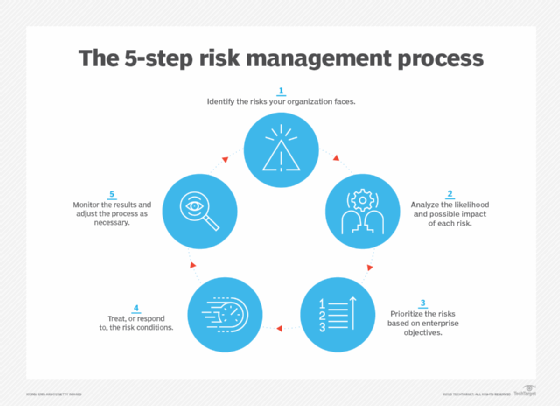The Importance and Importance of Risk Management in Ensuring Corporate Continuity
The Importance and Importance of Risk Management in Ensuring Corporate Continuity
Blog Article
Checking out the Relevance of Risk Management for Effective Decision-Making Approaches
In the complex world of organization, Risk Management arises as an important consider the decision-making procedure. The ability to identify possible hazards and chances, and strategize as necessary, can spell the distinction in between success and failing. With devices such as SWOT and PESTEL, organizations are outfitted to make educated options, fostering durability and versatility in an ever-changing environment. Wondering just how this functions? Let's unload the dynamics even more.
Understanding the Idea of Risk Management
Risk Management, a critical component in decision-making, is usually misunderstood or oversimplified. Risk Management entails regimented and structured approaches, making use of information and informative evaluations. From monetary unpredictabilities, lawful obligations, tactical Management mistakes, to mishaps and all-natural catastrophes, it resolves different threats - importance of risk management.
The Role of Risk Management in Decision-Making Processes
In the realm of calculated planning and business procedures, Risk Management plays an integral duty in decision-making processes. Risk Management thus comes to be an essential device in decision-making, aiding leaders to make educated options based on a detailed understanding of the threats entailed. Risk Management offers as an important element in the decision-making procedures of any type of company.

How Risk Management Improves Strategic Preparation
In the context of calculated planning, Risk Management plays an essential role. Launching with the recognition of potential threats, it further includes the execution of Risk reduction measures. The role of Risk Management is dynamic however not static, as it requires continuous tracking and adjusting of strategies.
Identifying Prospective Threats

Carrying Out Risk Mitigation
Risk reduction strategies can vary from Risk avoidance, Risk transfer, to risk reduction. Each technique ought to be customized to the particular Risk, considering its possible impact and the organization's Risk tolerance. Effective Risk mitigation requires a deep understanding of the Risk landscape and the potential influence of each Risk.
Tracking and Changing Methods
Though Risk mitigation is a vital action in tactical preparation, continuous monitoring and modification of these approaches is similarly important. This ongoing procedure allows companies to recognize new risks and reassess existing ones, ensuring the applied strategies stay effective in the ever-changing business setting. It also gives a possibility to assess the success of the Risk Management steps, permitting modifications to be made where needed, additional boosting tactical planning. Reliable monitoring and change require the usage of analytics and key efficiency indications (KPIs) to measure effectiveness. These tools offer valuable data-driven insights that can inform critical decision-making. Consequently, tracking and readjusting Risk Management methods is a vital element for boosting a company's durability and strategic preparation.
Situation Studies: Successful Risk Management and Decision-Making
Worldwide of business and money, successful Risk Management and decision-making often function as the pillars of prosperous ventures. One such entity is a multinational oil firm that mitigated financial loss by hedging versus changing oil prices. In another instance, a tech startup prospered by identifying and accepting high-risk, high-reward techniques in a volatile market. An international financial institution, confronted with regulatory unpredictabilities, effectively browsed the circumstance with proactive Risk evaluation and dynamic decision-making. review These instances highlight the worth of sharp Risk Management in decision-making procedures. It is not the lack of Risk, however the Management of it, that usually distinguishes successful companies from unsuccessful ones. These cases underscore the important role of Risk Management in calculated decision-making. importance of risk management.
Tools and Methods for Efficient Risk Management
Browsing the detailed labyrinth of Risk Management requires the ideal collection of techniques and devices. These tools, such as Risk registers and warm maps, help in recognizing and evaluating possible threats. Techniques consist of both quantitative approaches, like sensitivity evaluation, and qualitative approaches, such as SWOT analysis. These help in focusing on threats based upon their prospective effect and possibility. Risk action strategies, a key part of Risk Management, entail accepting, preventing, moving, or mitigating threats. Tracking and managing dangers, with regular audits and reviews, ensure that the methods continue to be efficient. With these devices and methods, decision-makers can browse the facility landscape of Risk Management, therefore promoting informed and effective decision-making.
Future Fads in Risk Management and Decision-Making Techniques
As we check out the huge landscape of Risk Management, it comes to be apparent that the strategies and devices made use navigate here of today will continue to develop. The principle of Risk society, where every participant of a company is conscious and entailed in Risk Management, will acquire much more prominence. These fads advertise a more proactive and comprehensive technique in the direction of Risk Management and decision-making.
Conclusion

Risk Management thus comes to be an click here for info important device in decision-making, assisting leaders to make enlightened options based on an extensive understanding of the risks entailed. Risk mitigation methods can range from Risk evasion, Risk transfer, to risk reduction (importance of risk management). Reliable Risk reduction requires a deep understanding of the Risk landscape and the possible influence of each Risk. Risk action strategies, a vital element of Risk Management, involve accepting, avoiding, transferring, or mitigating threats. The idea of Risk society, where every participant of a company is mindful and included in Risk Management, will certainly obtain much more prominence
Report this page